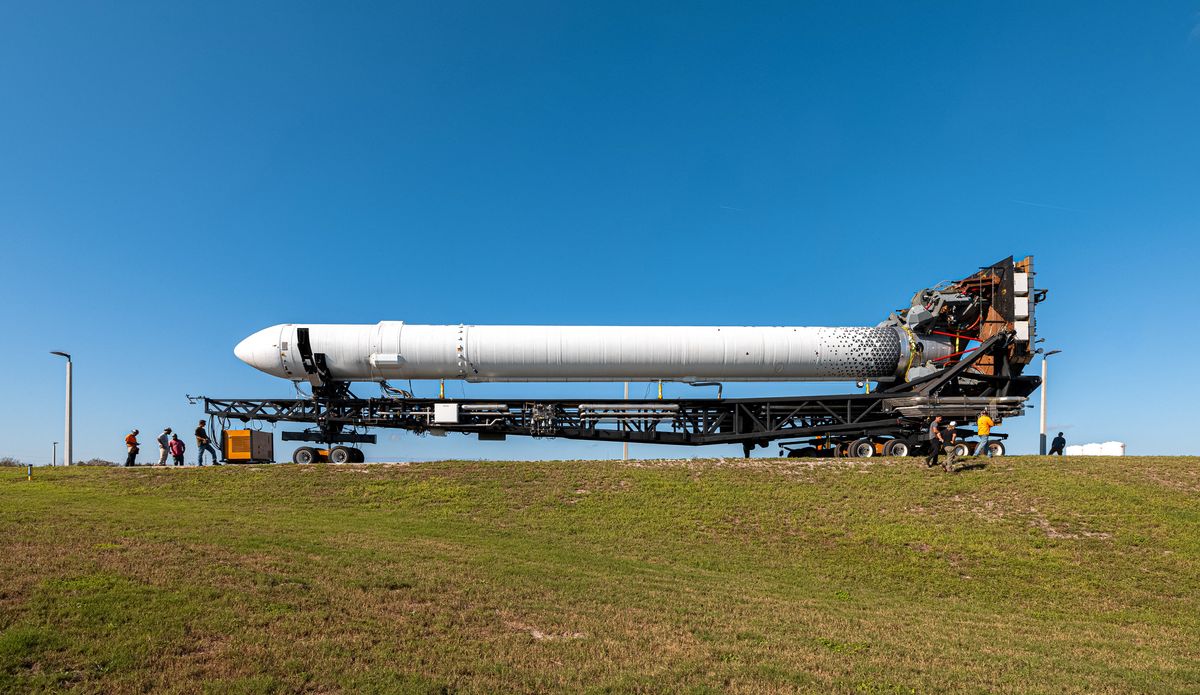Relativity Space's 3D-printed rocket launch is delayed
Relativity Space was set to launch its flight mission, nicknamed "Good Luck, Have Fun."

A few minutes every morning is all you need.
Stay up to date on the world's Headlines and Human Stories. It's fun, it's factual, it's fluff-free.
The backstory: Relativity Space is a California-based rocket startup causing quite a stir in the industry. While other companies focus on reusable rockets, Relativity Space built a rocket using 3D printing to cut manufacturing costs. In fact, a whopping 85% of its Terran 1 rocket was created using a 3D printer.
So how does the 3D-printing process work? Well, it's used in many different industries and involves machines that print sequential layers of materials from digital blueprints.
The founders of Relativity Space, Tim Ellis and Jordan Noone, previously worked at Jeff Bezos's spaceflight company Blue Origin. And get this – the company has secured around US$1.65 billion worth of launch contracts for its rockets. It hopes its 3D-printed boosters will offer a cheaper option to launch small commercial satellites into space.
The development: Relativity Space was set to launch its 3D-printed Terran 1 rocket test flight mission, nicknamed "Good Luck, Have Fun," to evaluate its performance in low-Earth orbit on Wednesday. This launch was a significant milestone for the space industry since Terran 1 is the first rocket primarily built via 3D printing. But, the launch was canceled with just over a minute to liftoff. It's unclear why, but there were some issues during the launch with the temperature of the rocket's fuel. The company has yet to announce a new launch date.
According to Josh Brost, Relativity Space's senior VP of revenue, the launch presented an opportunity to test several critical elements at once, showcasing the innovative potential of 3D-printed structures.
Key comments:
"As for flight success, safely clearing the pad, getting out over the ocean and passing Max-Q would be a big inflection point for today's launch," said Relativity Space representatives to Space.com via email. "Max-Q is the point where the structural loads on the vehicle are the highest, making it one of the most challenging phases of flight, so passing this milestone would effectively demonstrate that 3D-printed rockets are structurally viable, in addition to already successfully completing acceptance testing on the ground at our factory at these max stresses."
"No matter the outcome tomorrow, we are still in the early innings of a 9-inning ballgame," said Tom Ellis, CEO of Relativity Space, on Twitter. "This launch won't singularly define our long-term success."
"Terran 1 serves as a pathfinder and development platform on our path to Terran R production," Relativity Space representatives said in an email to Space.com. "Terran 1 has served us exceedingly well in this capacity leading up to our first launch, and we anticipate additional key learning will come from launch day as well."




Comments ()